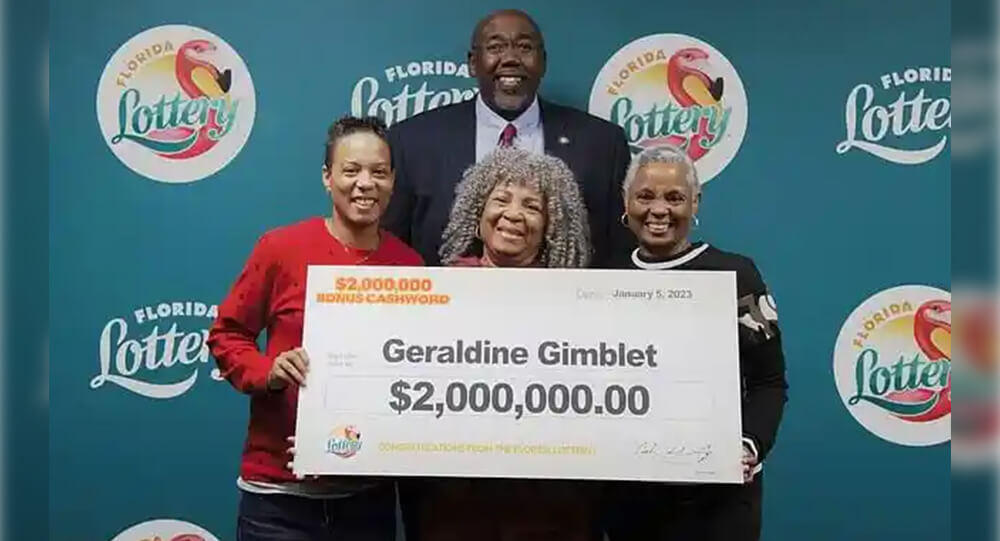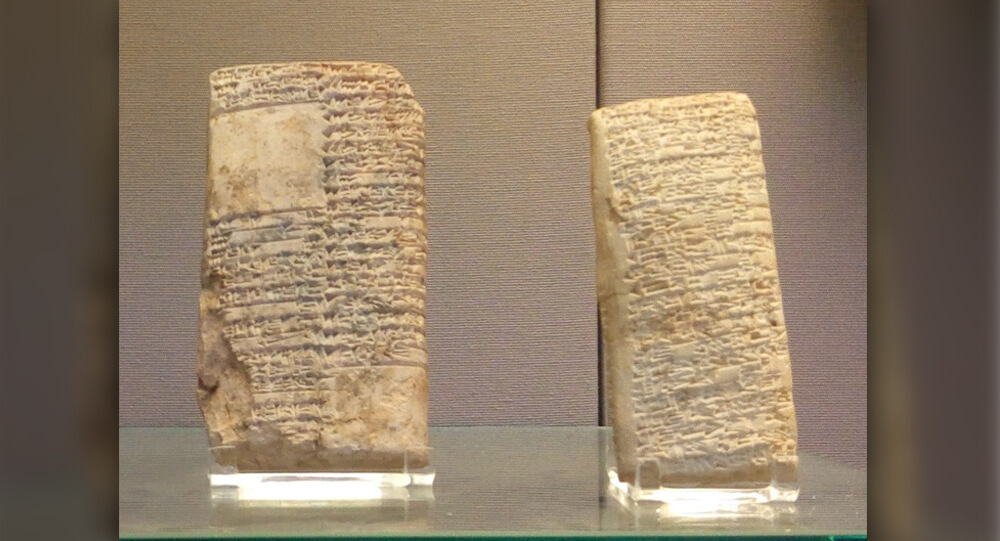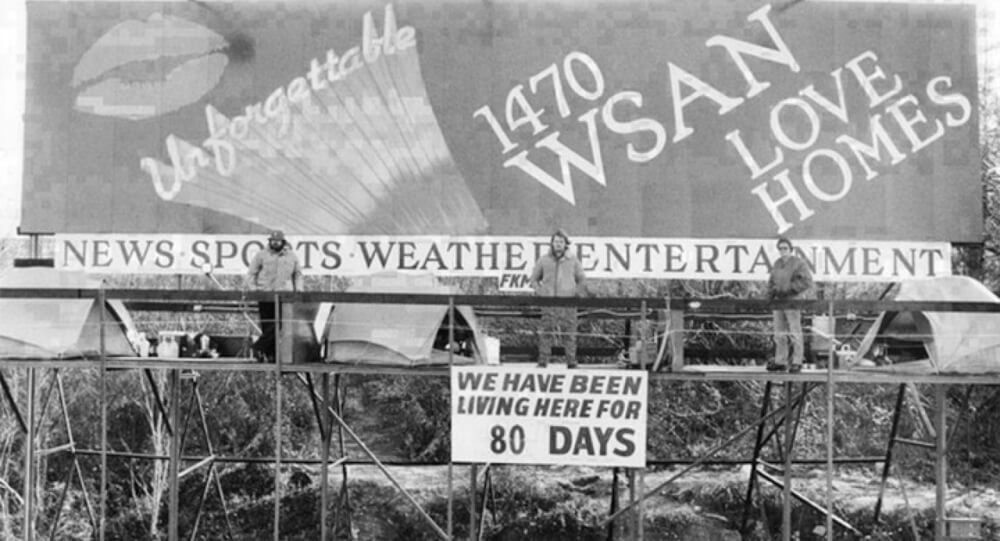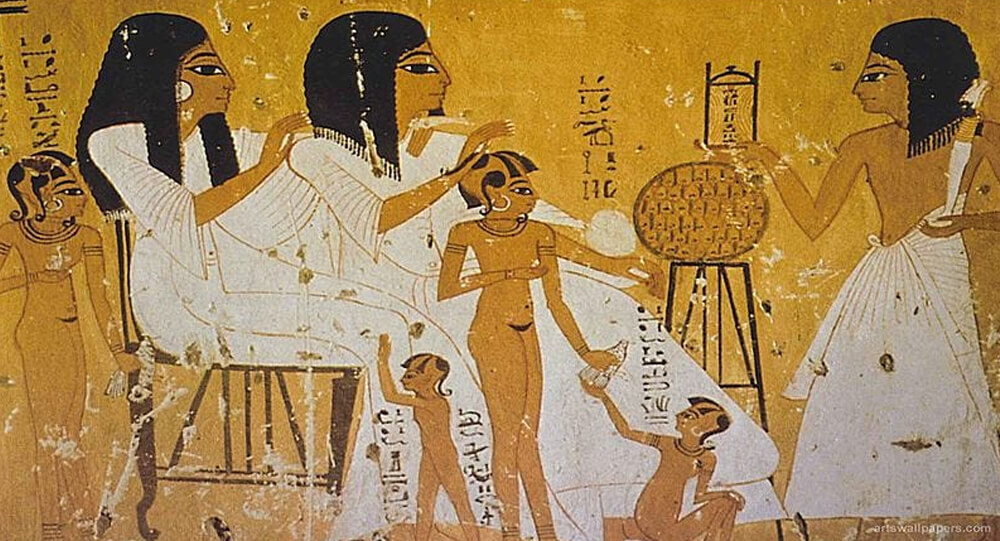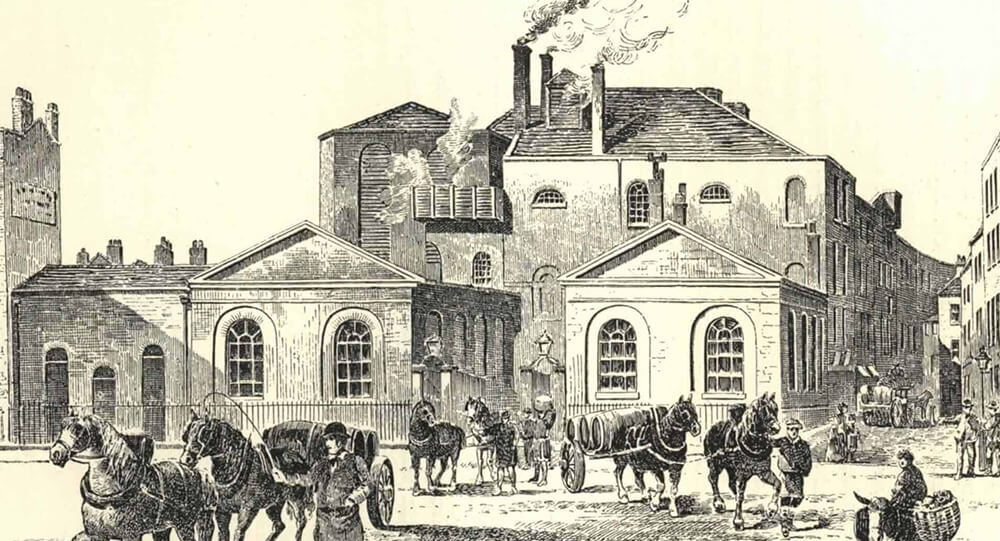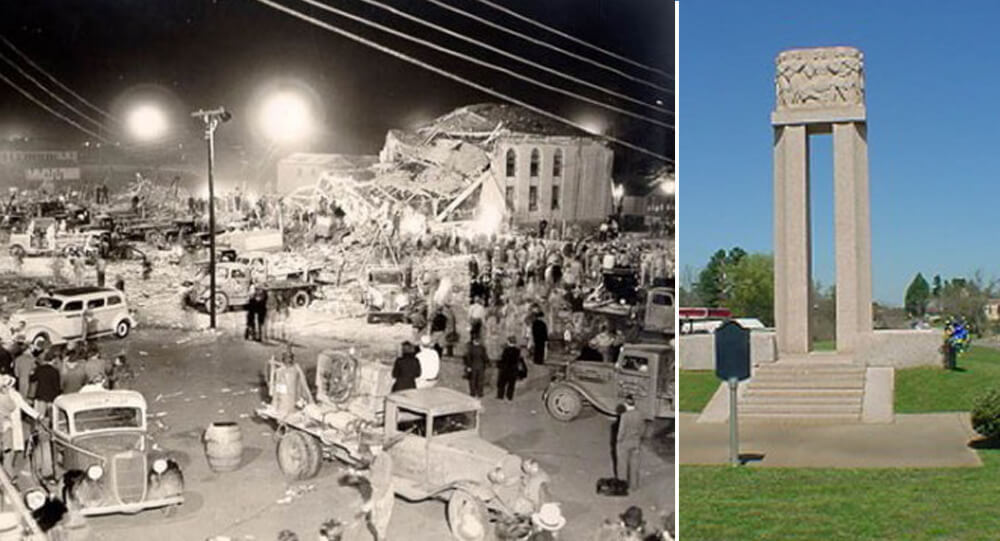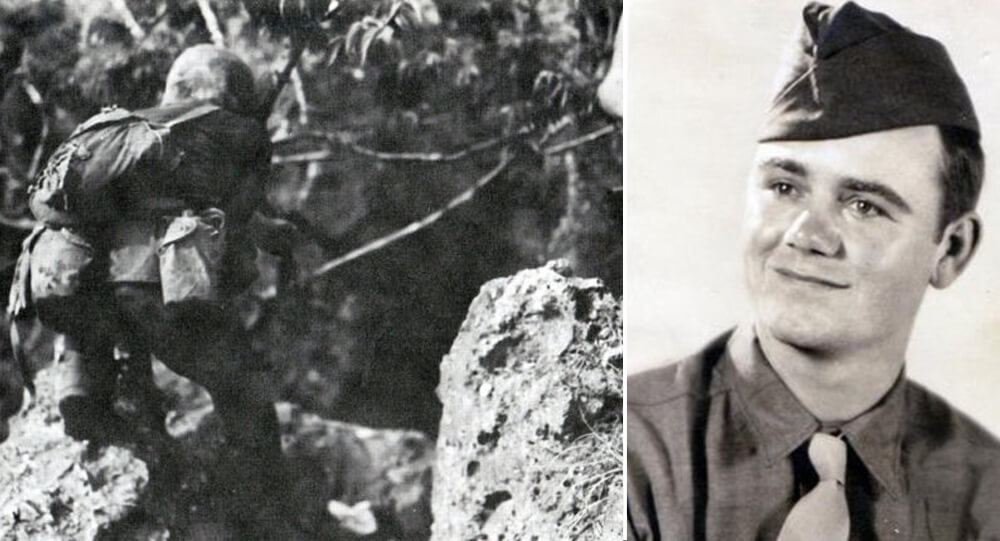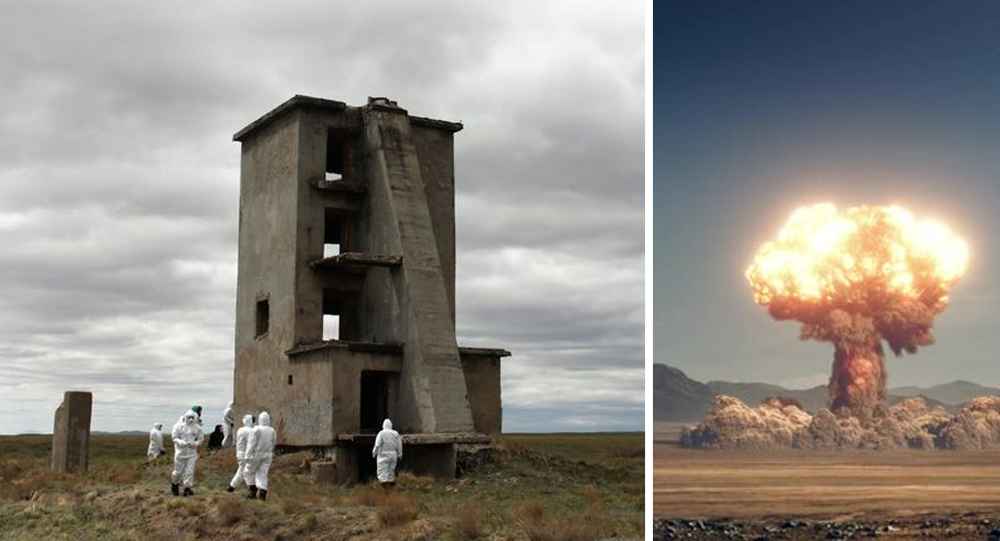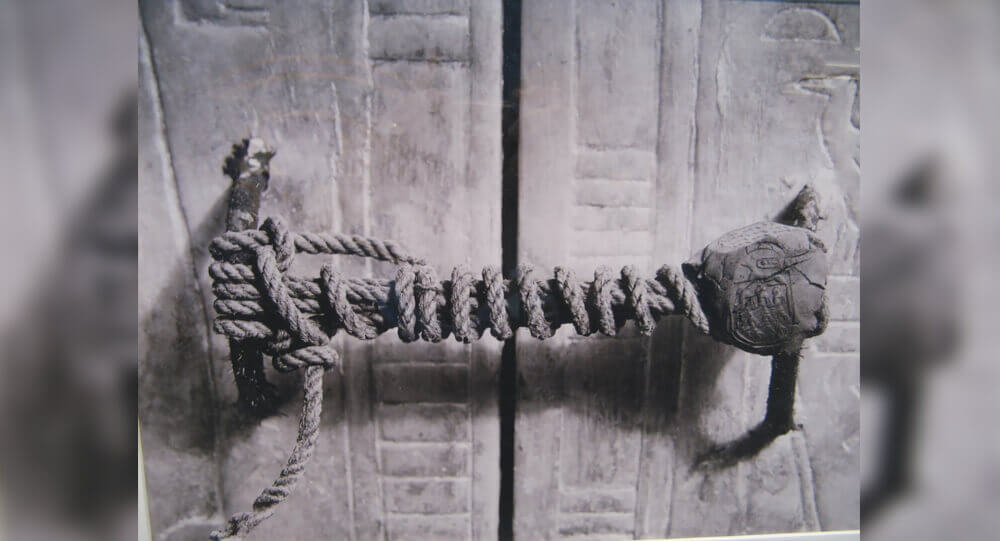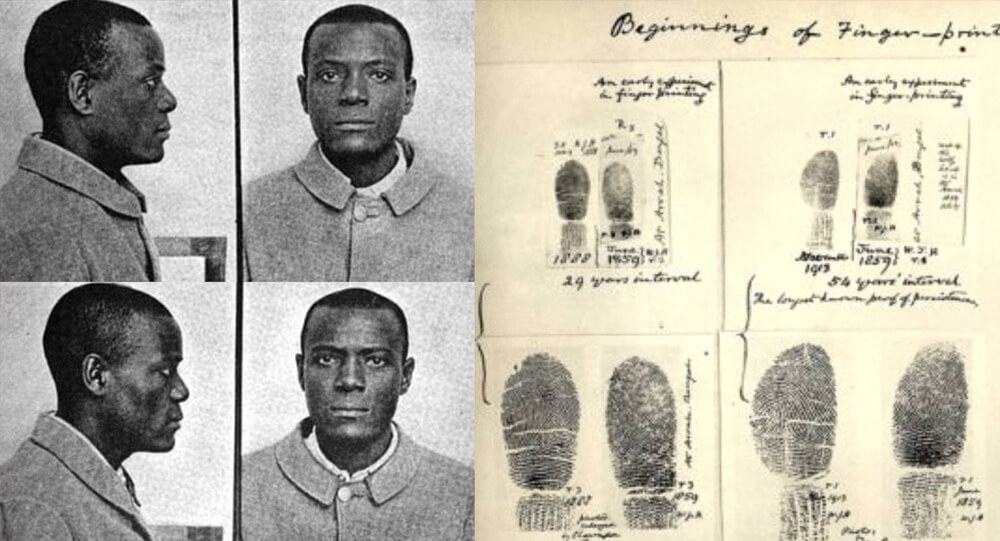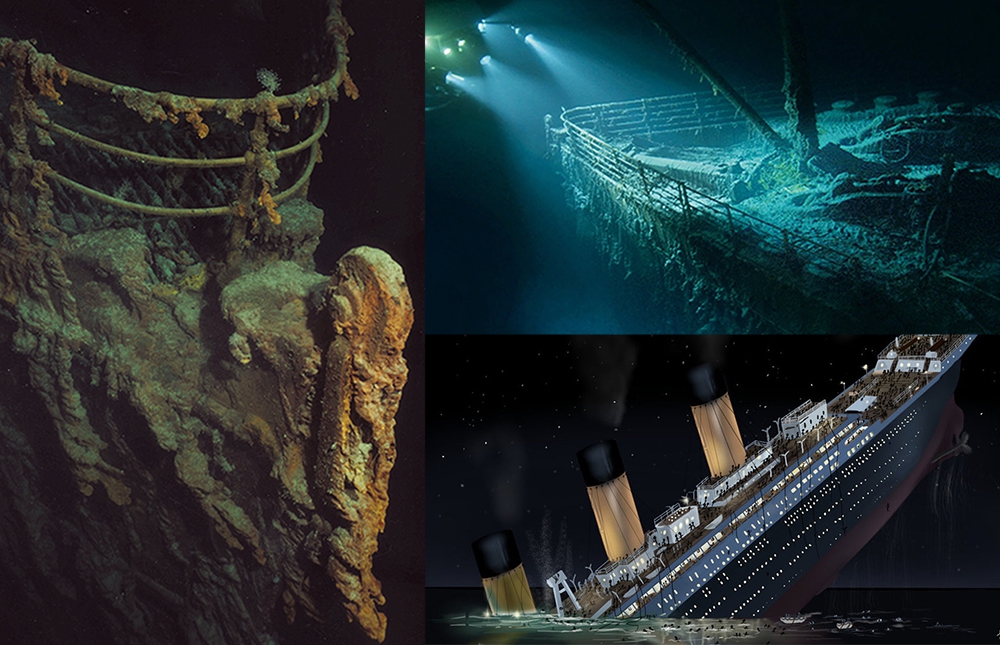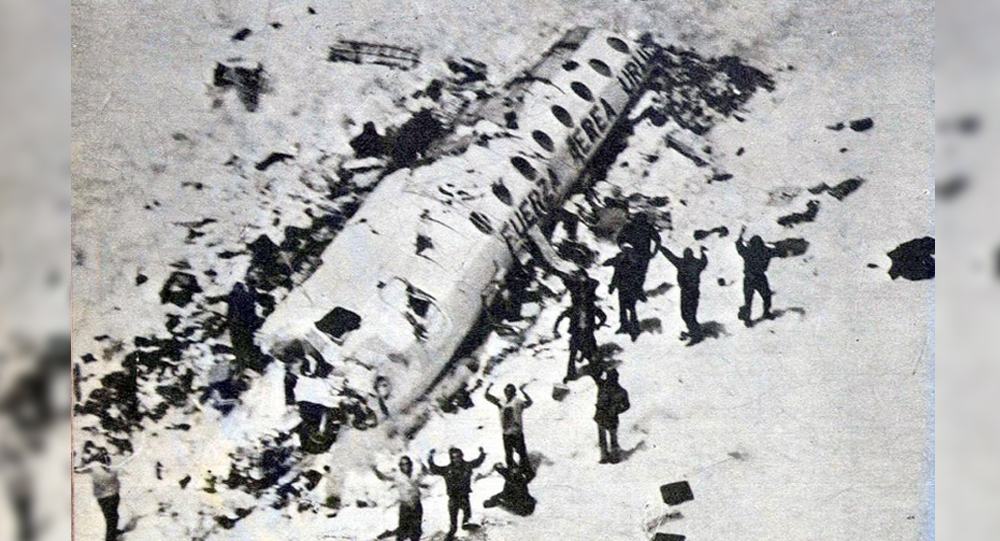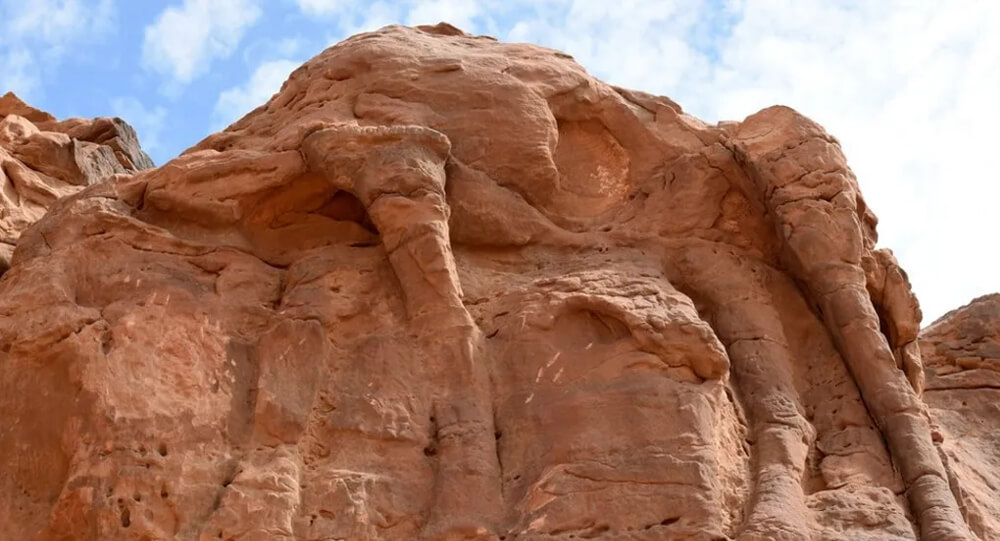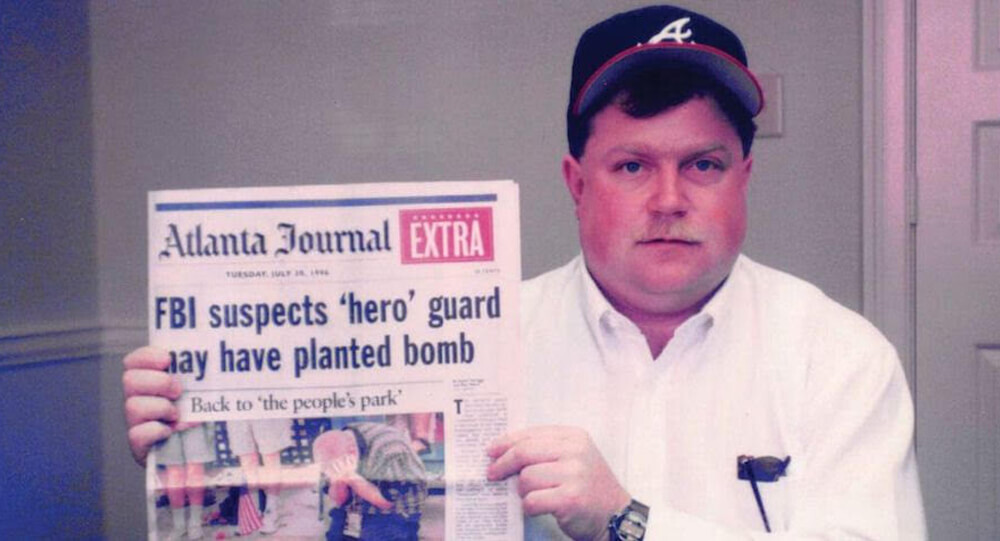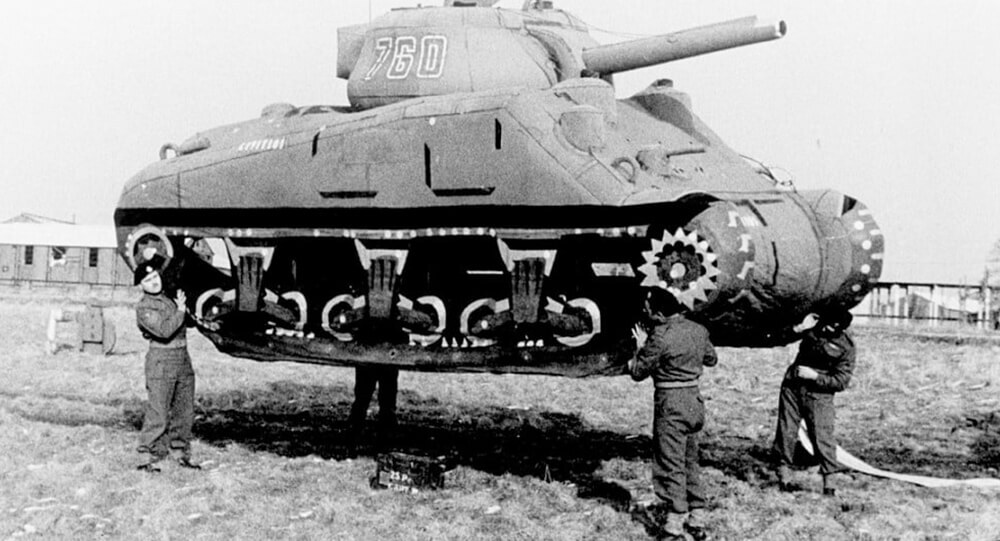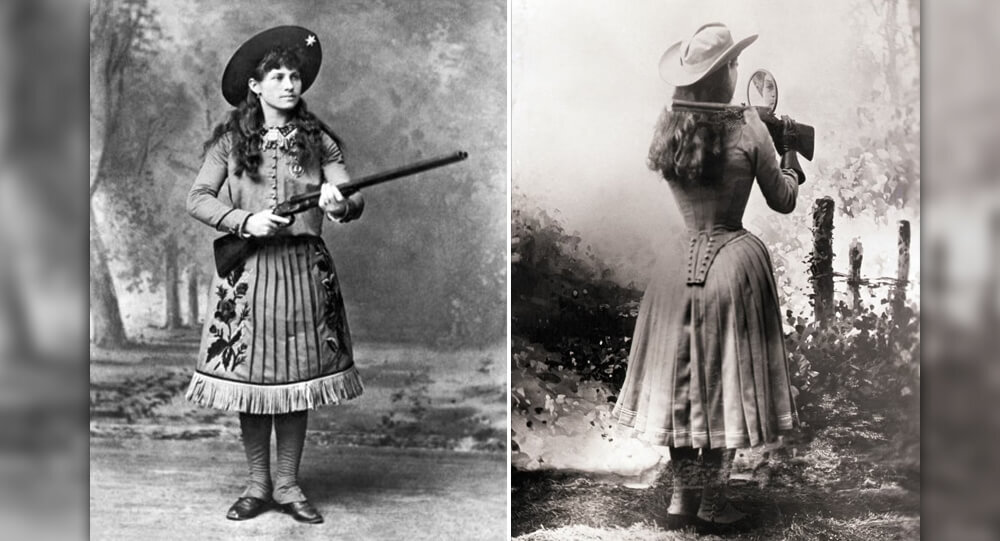

The true story of Annie Oakley, legendary sharpshooter
According to one 1887 book based on her life called The Rifle Queen, Annie Oakley was such a brilliant sharpshooter that she single-handedly thwarted train thefts, shot bears and panthers, and killed a wolf that already had her in its clutches.
Many untrue stories were sparked by Oakley’s reputation as one of the most accomplished gunslingers of her day. (The wolf story, for example, never happened.) Some of these myths live on today thanks to the 1946 Broadway musical “Annie Get Your Gun,” whose final scene depicts Oakley losing a match intentionally to protect her future husband’s ego—when in reality she won his heart by beating him in a shoot-out.
It’s challenging to distinguish fact from fiction in regards to Oakley’s life. Oakley spent 17 years showcasing her abilities on stages all around the world as the centerpiece of Buffalo Bill’s Wild West Show, a famed 19th-century act renowned for its romanticized portrayal of frontier life. She amazed audiences by ribbing playing cards in midair, shooting cigarettes from her husband’s lips, and—her signature trick—shooting a target behind her back while spotting it in a mirror.
The Wild West Show producers and her husband Frank Butler played a significant role in shaping Oakley’s reputation. However, some of Oakley’s own accounts as well as those of her ancestors still exist. The life of the sniper is told in this genuine account.
Early life
To begin with, Phoebe Ann Moses, who the family occasionally spelt Mozee, Mosey, or Mauzy, was the gunslinger’s actual name. She began using the stage name around the time she joined the Wild West Show in 1885.
Oakley was originally from Darke County, Ohio, not the Wild West, and she had a difficult beginning. Oakley had to work to support her family after her father passed away when she was five years old. In Bull’s-Eye: A Photobiography of Annie Oakley, published by National Geographic, Sue Macy notes that before picking up her father’s gun, Annie helped provide for the family by building traps to catch game.
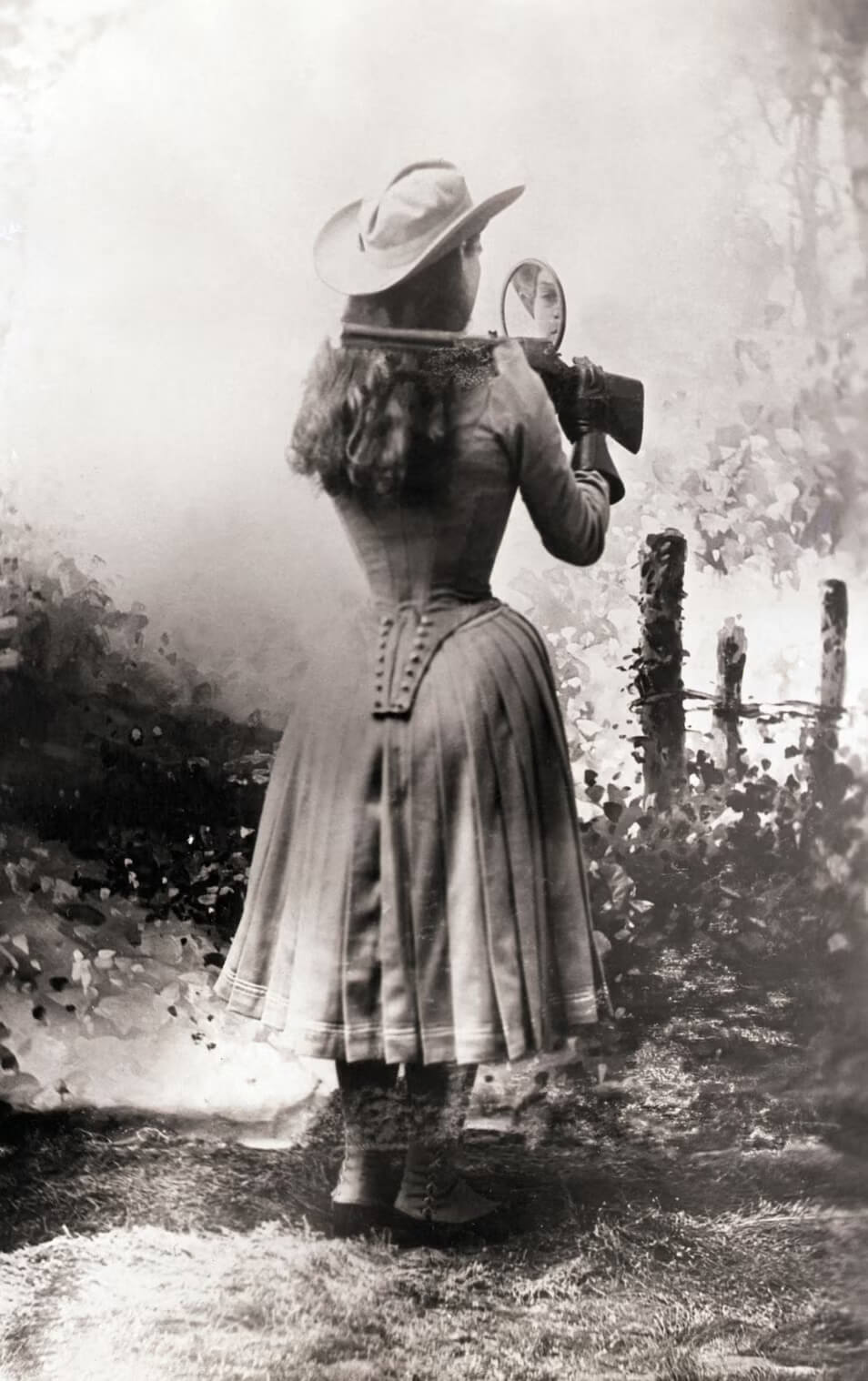
Even though details like the species of animal Annie killed have changed over time, Annie would frequently recount the tale of her first hunt. She was confident that she only needed to fire one shot to bring it down.
She once said, “I don’t know how I learned the skill,” according to Macy. I guess I was just born with it.
Once more tragedy occurred in 1870 with the passing of Oakley’s stepfather. Her mother struggled to support her family and sent several of her kids to live with neighbors. Oakley was taken in by a local farmer to assist care for his kids. He said she’d have time for hunting and study, but it gradually devolved into indentured slavery.
She eventually came home to her mother as an adolescent after succeeding in escaping. At that point, she began selling her kills on a regular basis to a nearby grocer and motels, making enough money to settle the mortgage on her mother’s home.
Her skill with a gun turned into a career, and in 1875 it even brought her together with fellow marksman Frank E. Butler. When Butler invited Oakley to a shooting competition, she was in Cincinnati visiting her sister at the time.
Butler’s final shot went over the line, giving Oakley the victory, but both Oakley and Butler struck every bird released from the trap. The two got hitched shortly after and started touring as a duo.
Buffalo Bill’s Wild West Show’s leading lady
Oakley and Butler joined Buffalo Bill’s Wild West Show in 1885, catapulting her to celebrity all over the world. At a shooting exercise, Butler launched clay pigeons into the air, and Oakley successfully hit every one of them.
Butler and Oakley travelled the country extensively with the Wild West Show organization. Buffalo Bill, or William F. Cody, produced the outdoor spectacular of the imaginary Wild West in 1883. It featured cowboys facing off against Indians in reenactments, shooting displays, and performances showcasing roping and horseback riding. (Cody would subsequently publicly denounce some of the negatively portraying Native Americans in the show.)
Oakley rapidly established herself as the show’s star after many spectators were astounded by the mix of her accurate shooting abilities and her small stature. She also attained fame abroad in 1887 when the troupe gave a performance at London’s Golden Jubilee for Queen Victoria.
The Queen and her son Edward, the Prince of Wales, attended the performance, which had Oakley as its featured performer. Reports of the meeting, in which the prince referred to Oakley as a “wonderful little girl,” support stories that Edward invited the shooter to his box after the performance.
Before returning to the Western show in 1889, Oakley and Butler soon ventured out to do private exhibitions for European nobility. In fact, despite some rumors to the contrary, Oakley shot a cigarette out of German Prince Wilhelm’s palm, not his mouth.
When Oakley was hurt in a railroad accident in 1901, the couple eventually abandoned the Western performance. Nevertheless, she kept making appearances at exhibitions up to her official retirement at age 53.
An all-female regiment of the U.S. Army
In addition to her legendary accuracy, Oakley was well known for her charitable and voluntary efforts. In the prologue of National Geographic’s photobiography, Bessie Edwards, Oakley’s great-grandniece and cofounder of the Annie Oakley Foundation, notes that Oakley gave time and money to tuberculosis patients, orphans, and young women pursuing higher education.
More than 15,000 women are believed to have been taught to shoot over the years through free workshops thanks to Oakley’s zeal for teaching them the sport and self-defense shooting techniques.
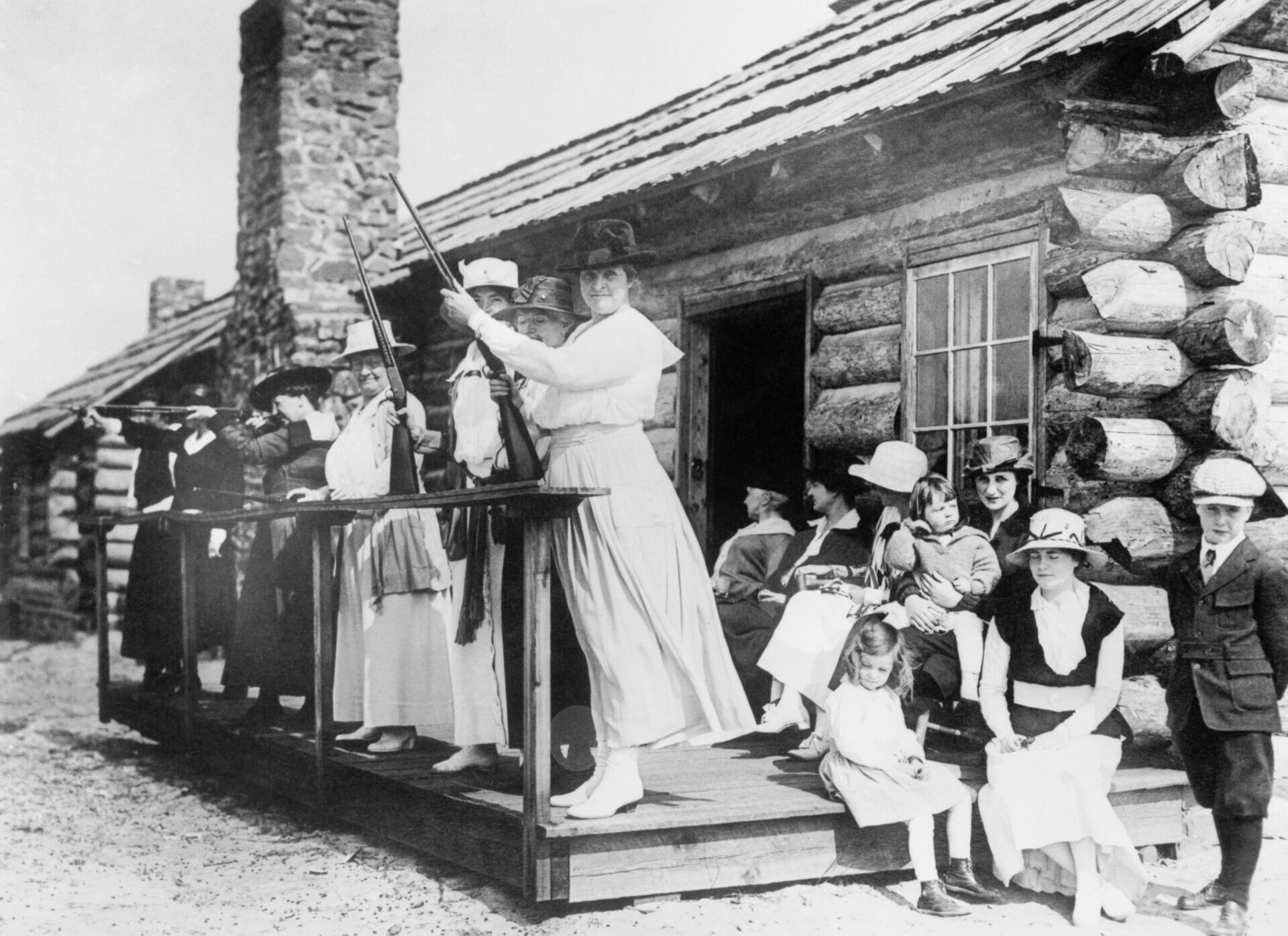
She reportedly previously wrote, “I think every woman should learn the use of firearms,” according to Macy. “I want every woman to be able to handle [firearms] as naturally as they handle children,” she said.
Prior to the start of the Spanish American War in 1898, she wrote to President William McKinley and offered to assemble a regiment of 50 American women sharpshooters, despite the fact that at the time, women were not permitted to join the armed forces of the United States. The War Department rejected her proposition.
In a letter to the Secretary of War in 1917, Oakley once more offered to train a women’s division as the United States entered World War I. “I can guarantee a regiment of women for home protection,” she said, “every one of whom can and will shoot if necessary.”
Although the secretary declined her offer, Oakley nevertheless contributed to the war effort by providing shooting demonstrations at U.S. Army postings. She even taught her dog, Dave, to find financial gifts for the Red Cross that were hidden and wrapped in handkerchiefs for the dog to find. As a result, Dave became known as Dave the Red Cross Dog.
Legacy
Soon after suffering a permanent leg injury in an automobile accident in 1922, Oakley was exploring changing directions in her career, such as becoming a cinema star or penning a memoir. However, her health quickly deteriorated. She was given a blood condition diagnosis in 1926 and passed away in Greenville, Ohio, at the age of 66. 18 days later, her husband, who had been spending the winter in North Carolina, passed away.
Despite contradictory accounts of her life, or possibly because of them, Oakley’s reputation has held up over time. With her likeness appearing in TV series, films, and musicals, her persistence and determination have inspired many people.
She reportedly responded, “Aim for the high mark and you will hit it.” “No, not the first, second, or perhaps third time. However, keep pointing and shooting because only practice will enable you to become perfect. At long last, you’ll achieve success.

Mother who spent entire life savings for daughter’s cancer treatment won the lottery
A mother won $2 million from a $10 scratch-off lottery ticket after she spent all of her entire life savings to pay her daughter’s cancer treatment. She bought the winning ticket after her daughter’s last cancer treatment.

Ea-Nasir: world's oldest written customer complaint
This clay tablet, written in cuneiform, is the oldest known written customer complaint about the delivery of poor quality copper ingots. Originally from ancient Babylon, the tablet dates back to 1750 BCE, and it was written by a customer named Nanni to a merchant named Ea-Nasir. It is currently housed in the British Museum.

3 men lived on top of a billboard in tents for almost 9 months
From 1982-1983, three men in Allentown PA competed in a radio contest in which they lived on top of a billboard in tents. Whoever stayed up longest would win a house. Due to economic pressure from the recession, none of the contestants wanted to give up, so the contest lasted almost 9 months.

Ancient Egyptians Had Pregnancy Tests Over 3500 Years Ago
The ancient Egyptians used a pregnancy test that involved potentially pregnant women peeing on barley and wheat seeds. Plant growth indicated pregnancy: barley for a boy and wheat for a girl. Later tests revealed that pregnant women's urine causes plant growth 70% of the time, whereas non-pregnant women's urine does not.

The 1814 London beer flood
In 1814, there was a beer flood in London when a tank containing more than 300,000 gallons ruptured in which 8 people drowned.

New London School Explosion, Deadliest school disaster which killed almost 300 children and teachers
In 1937, a gas leak in the basement at the local school in New London, Texas caused a massive explosion which killed almost 300 children and teachers, the deadliest school disaster in US history. Adolf Hitler even sent his condolences by telegram.

Inside The Mysterious Death Of The Famed Gothic Writer Edgar Allan Poe
Hours before his death Edgar Allen Poe was found on the streets of Baltimore. He was incoherent, wearing another man’s clothes, and unable to explain how he got there. The cause of his death is an unsolved mystery.

Thomas Baker's heroic act that earned him the "Medal of Honor" was 8 bullets until death
Thomas Baker instructed his team to leave him with a pistol and eight bullets propped up against a tree after he was injured. Later, American troops discovered the now-deceased Baker in the same location, lying next to eight dead Japanese soldiers and carrying an empty pistol.

Nordlingen, The Town Inside A Meteorite Crater With Millions Of Meteorite Diamonds
The German town of Nördlingen is embedded with 72,000 tons of microscopic diamonds. About 15 million years ago, a meteorite hit this region, and the impact created a massive depression and formed rocks containing diamonds, glass, and crystals. The town was built in the impact crater sometime around 898 CE.

The Forgotten Story of Semipalatinsk and the Soviet Nuclear Experiments
Between 1949 and 1989, the Semipalatinsk Test Site in Kazakhstan became the primary location for Soviet nuclear weapons tests, exposing millions of unsuspecting villagers to radioactive fallout. Known as the “Polygon of Suffering,” this remote desert witnessed 456 nuclear detonations that caused widespread health crises, birth defects, and generational genetic damage. This article narrates the chilling legacy of Semipalatinsk, unveiling the human cost of Cold War arms development and the ongoing struggle for healing and recognition in Kazakhstan.

The unbroken seal on King Tutankhamun's tomb until 1922
The unbroken seal of Tutankhamun's tomb before it was opened in 1923, it was unbroken for over 3000 years.

How Sleep Deprivation Was Once Used as Torture
Sleep deprivation, long before modern interrogation techniques, was considered a “clean” and effective form of torture—leaving no physical scars, yet breaking minds with haunting silence. Victims endured days and nights without rest, leading to vivid hallucinations, disorientation, and psychological torment. This article traces the dark history of sleep deprivation as a weapon, examines the science behind its effects on the brain, and shines a light on the painful balance between human endurance and cruelty in the annals of coercion.

Will & William Wests: The puzzling situation of two inmates who are identical but not related
These are the mugshots of Will West and William West, and they are not related. They were both sent to Leavenworth Prison at the same time, in 1903, and after some confusion, the staff understood they had two different prisoners with the nearly same name, who looked exactly alike. They are part of the reason fingerprints are now used as identification.

Inside China’s Footbinding Tradition: The Painful Ritual of Lotus Shoes and Bound Feet
In China, Lotus shoes were used to bind women's feet to keep their feet small

8 Interesting Facts About The Unsinkable Ship, TITANIC
If you ask your friends what's the most famous ship in history the answer in most cases will be the same, of course the legendary Titanic. Its history is full of mysteries, at first it was a source of hope and national pride as well as proof of the triumphs of mankind but it soon became a source of nostalgia and pain, the extent of which cannot be described in words.

1972 Andes Plane Crash Survivor recall the terrifying Struggles to Stay Alive
On October 13, 1972, a plane carrying a rugby team from Uruguay crashed in the Andes between Chile and Argentina. The survivors were in brutal conditions - high altitude, bitter cold, and the lack of food—and faced the most terrible choice—eating the frozen flesh of their dead friends or starving to death themselves.

The Littlest Skyscraper: How J.D. McMahon’s 480-Inch Con Fooled Investors in 1919
In 1919, J.D. McMahon convinced investors to fund a 480-foot skyscraper, but he labeled the plans as 480 inches, building a 40-foot structure instead. After taking $200,000, he won in court since the plans matched what he built.

Saudi Arabia camel carvings dated to prehistoric era
Archaeologists were shocked to discover that a series of camels carved into desert rock faces in north-western Saudi Arabia are actually prehistoric, dating from 7,000-8,000 years ago - before either the Pyramids of Giza or Stonehenge were built.

During the 1996 Olympic bombing, Richard Jewell falsely accused of committing the crime after saving dozens of people
Richard Jewell, an American security guard, discovered a bomb during the 1996 Olympic Games in Atlanta and assisted in the evacuation, but was later wrongfully accused and faced public scrutiny. He was cleared, but it had a lasting impact on him until his death in 2007 at the age of 44.

What exactly was the US's 'Ghost Army' during WWII?
During WW2, there was a special unit of men dubbed the ‘Ghost Army’. The unit was made of artists, creative and engineers and their job was to create deception about the enemy. From inflatable tanks to phony convoys to scripted conversations in bars intended to spread disinformation, they used all possible tricks to fool the enemy.

Nearest Green, America's first known Black master distiller
Nathan "Nearest" Green was an African-American head stiller who is now more frequently referred to as a master distiller. He was renowned for imparting his distilling knowledge to Jack Daniel, the creator of Jack Daniel's Tennessee whiskey distiller, after Jack Daniel was freed from slavery following the American Civil War.

Remembering the miracles of the 1985 Mexico earthquake (unbelievable stories)
In 1985, after an 8.0 magnitude earthquake hit Mexico City, nearly all newborn babies survived a collapsed hospital. They are known as “Miracle Babies” for surviving 7 days without nourishment, water, warmth or human contact.

What Was the Beast of Gévaudan?
Between 1764 and 1767, a mysterious animal called the Beast of Gévaudan terrorized the French village called Gévaudan. It attacked and killed about 100 adults and children. While most believe it was a wolf, some say it may have been a wolf-dog hybrid, hyena or even a lion, but without any genetic evidence, the beast will remain a mystery forever.

Hedy Lamarr, A Hollywood actress who also a mathematician and inventor
Hollywood actress Hedy Lamarr was also a mathematician and the inventor of frequency hopping spread spectrum, a technology still used for bluetooth and wifi

How 18th Century Women’s Rights Movements Shaped Modern Equality
The 18th century marked a turning point in the quest for women’s rights, as passionate voices challenged centuries of gender inequality and laid the groundwork for modern feminism. From pioneers like Mary Wollstonecraft to revolutionary declarations and early advocacy, this era sparked debates on education, political participation, and social justice that continue to resonate today. Journey through the origins of women’s rights movements and discover how their bold ideas shaped the fight for equality.

